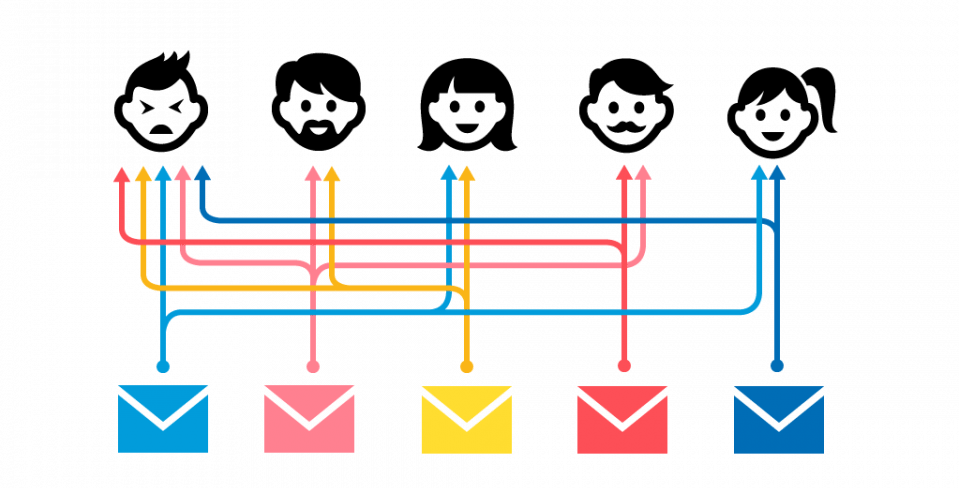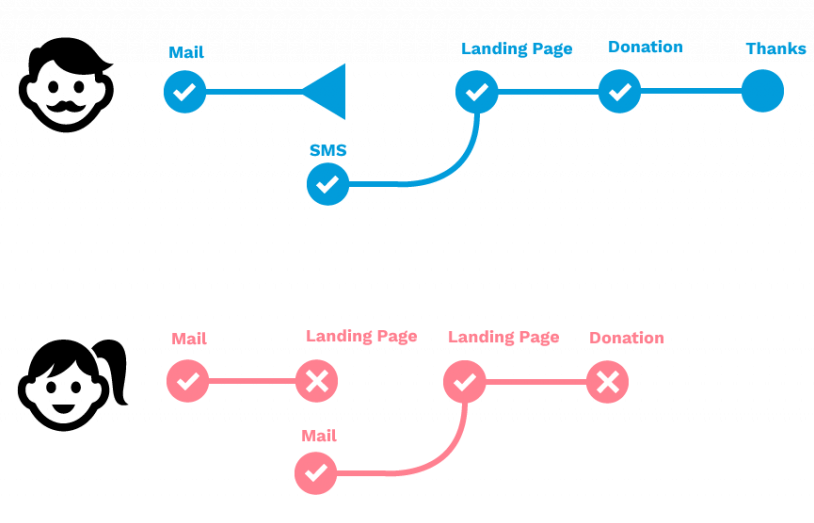Donor centricity – Focus on the people
Marketing Automation for NGOs: Donor Focus & Donor Centricity
Things didn’t used to be better. But things were simpler. In marketing, for example. For decades, companies and organizations only had to design and coordinate their mailings and a manageable number of telephone campaigns. It was a channel- and not a donor-centered approach.
“The pace is tremendously faster.”
With the advent of digital channels, this has changed radically, because not only are a large number of channels available, but also the pace is massively faster. Instead of 1 mailing per month, several posts, e-mails and push notifications are sent out per day. These are often barely coordinated, because they are sent by different departments, some of which operate with different systems. Operating in silos is unfortunately still the order of the day in many places.
“There must be a mindshift towards donor centricity.”
The lack of solutions is often attributed to the fact that the existing technology is not capable of correctly controlling the communication measures. This may be true in many cases and it is essential to have modern marketing tools. But this explanation does not go far enough. In order for the tools to be used correctly, a mindshift towards donor centricity must first take place at the conceptual level.
«A fool with a tool is still a fool.»
–
Grady Booch
In many places today, the marketing measure is still the focus of attention. This means that first a measure is designed and then one considers which persons from the database have a profile that fits the measure. This worked well until a few years ago, but because the number of interactions and touchpoints has multiplied, the same person suddenly appears in a (too) high number of selections. The result: donors are confronted with a flood of messages that are often barely coordinated. This is not only inefficient, but also overwhelms or even annoys the recipient.

The marketing measure instead of
the donor is at the centre of attention.
–
But how can this be prevented? The solution is called donor centricity. Instead of thinking in terms of measures, we must start to focus on the donor’s needs. In concrete terms, this means that we must identify the right interventions for each donor, not the other way around. This is a small but important difference: With this approach we ensure that each donor only receives a certain number of messages and that these are coordinated with each other.
“One fictional person is modelled for each of the major segments.”
For the operational implementation of a donor-centered mindset, working with personas and donor journeys has proven to be a successful approach. For each of the most important segments, a fictitious person is modelled who represents the expectations and wishes of the organisation. Based on this information, sequences of communication measures, the so-called Donor Journeys, are defined. This ensures that each donor receives the right message at the right time on the preferred channel.

Two people – two
different journeys.
–
The result is a better and longer lasting relationship with the donor, which means higher income and lower acquisition costs. Last but not least, this methodology has a positive influence on internal cooperation: When designing a Donor Journey, it quickly becomes clear to everyone involved that a harmonious experience for the donor can only be achieved through genuine cooperation and coordination across departmental boundaries.
This way to part 2: Big Data – Size doesn’t matter
This way to part 3: Personalized, orchestrated, real time: This is what Marketing Automation can do for NGOs
